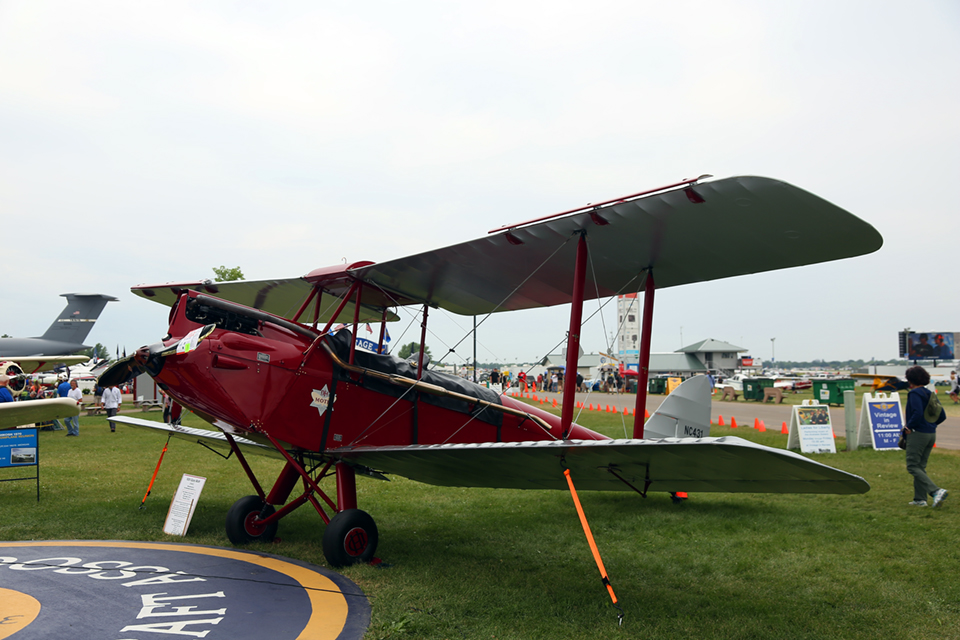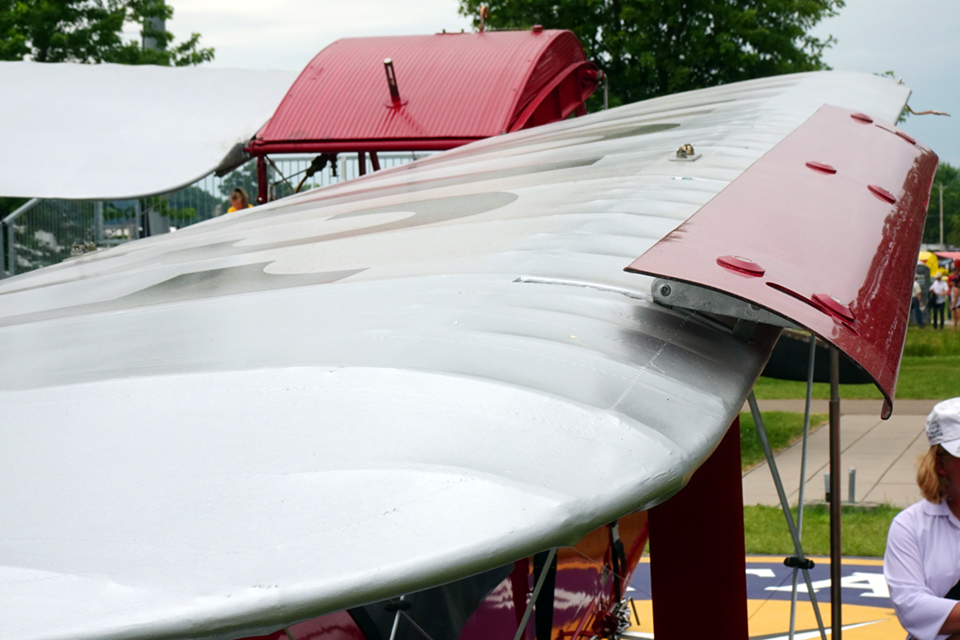91 Years Young
Gipsy Moth is a subtle spellbinder in Vintage area
By Frederick A. Johnsen
July 27, 2019 - It has sweeping pointed tail surfaces and a corrugated gas tank on the upper wing center section to prove its pedigree as a de Havilland biplane, but don't call it a Tiger Moth. It's a 1928 Gipsy Moth, powered by a 120-hp Gipsy II engine.
Its wings do not have the stagger or sweepback of a Tiger Moth, but they cleverly fold back along the fuselage sides. This 1928 Gipsy Moth is a star attraction in the Vintage Aircraft area at EAA AirVenture Oshkosh 2019.
Owner Mike Maniatis trailered his newly restored prize for the 1,000 miles from Old Orchard in New York to Oshkosh. "I only had about six hours on it before I came here," he said. First post-restoration flight was June 12, barely a month ago. Mike has flown his glossy treasure during AirVenture, and he appreciates the modern concessions it has, like brakes and a steerable tailwheel instead of a skid.
When Mike bought the partially rebuilt Moth in Canada in 2014, he did not know its American past. Research showed this de Havilland Gipsy Moth was one of the aircraft de Havilland shipped to Massachusetts where the British company established a dealership to sell Moths to American buyers. First owner was Gar Wood, builder of fast wooden boats. Mike said the Moth went to Canada about three years later, initially serving a variety of tasks, including ferrying mine executives to remote sites and carrying mail.
Mike was faced with a number of decisions about how to restore his Gipsy Moth. He lacked photos of it as delivered, so its original color scheme could not be nailed down with certainty. He explains that some Moths of the era were doped only in basic protective silver as a weight-saving measure. When de Havilland relented and added color top coats, the colored dope was only applied to the fuselage. A de Havilland Moth historian in the United Kingdom helped Mike select an appropriate vintage color scheme that uses a deep red shade on the fuselage, with the standard silver wings and tail surfaces.
Mike used a time-honored method to attach the fuselage fabric to the frame with coats of nitrate dope acting as a cement. He followed this with brushed-on and sanded butyrate dope layers, capped with three or four sprayed coats to finish the job. The result is clean and inviting. The Moth looks like it flew off the cover of a 1928 aviation magazine in all its glory. In fact, Mike said the Moth is like artwork that has an aesthetic appeal. He finds people are drawn to his clean biplane.
During a program in the Vintage Aircraft village, Mike and an assistant quickly disconnected pins and folded the right wing back along the fuselage to show how easily it can be done. The wing also features licensed Handley Page leading edge slats that deploy automatically when needed.
The Gipsy Moth "is a great cross-country airplane," Mike said. He calls the cockpit comfortable. It features a vintage British Husun compass mounted to the right side of the cockpit, derived from maritime compasses by that company. And Mike distinguishes his prewar Moth from later Tiger Moths: "The Tiger Moth feels much more modern than this airplane."



